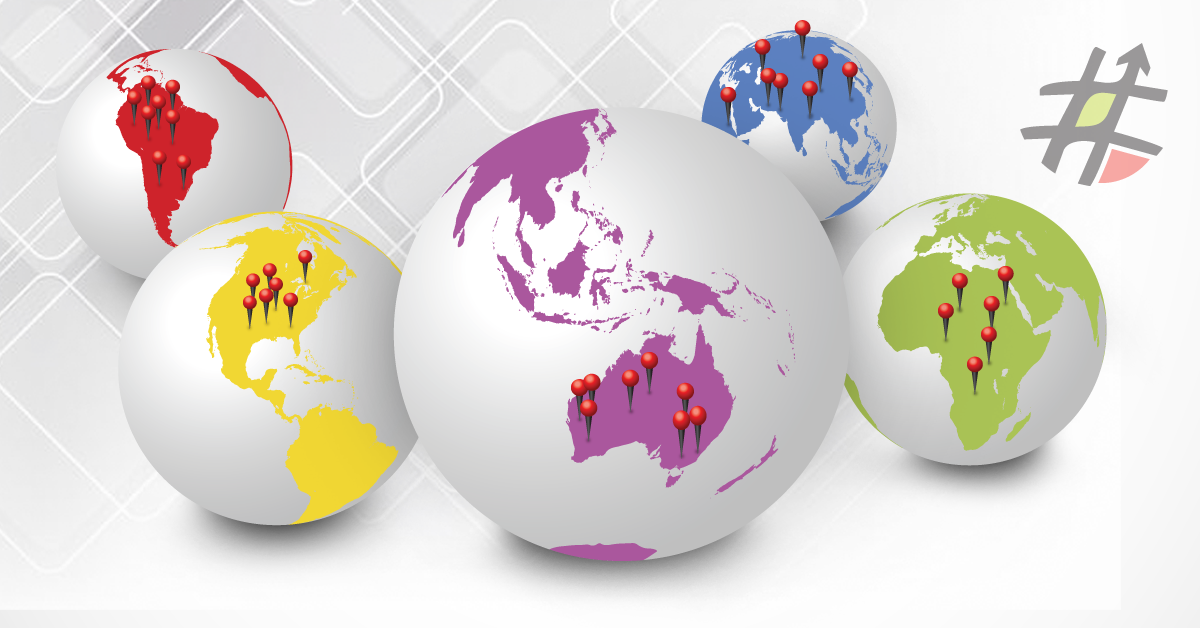Proverbs and Anecdotes
When I was asked to contribute to the Barrett 2020 Sales Trends Report, the invitation posed a question: “With everything we need for positive change and progress available to us now, why wait for a crisis to secure our future?” Immediately, all the proverbs warning against change jumped to mind. “If it ain’t broke, don’t fix it”, “she’ll be right”, “don’t change a winning formula”, and so on!
We humans are generally a conservative lot. We’re creatures of habit and, by and large, we like to change in increments within a set structure. We all want to improve KPIs in our business processes, but drastic changes to the supply chain? Not only is that something most of us shy away from, but anecdotal evidence discourages us strongly.
Like the flu, bad news travels fast. We’ve all heard horror stories of change gone wrong, or even had first-hand experience. Altered procurement chains that sunk businesses, re-jigged company structures with the best intentions that unfortunately led to worse outcomes. But stories of badly managed change are not a reason to avoid change altogether. I know, you’re thinking of that other proverb: “leave well enough alone”.
So, maybe it was inevitable that we delayed until the “house was on fire” – something else mentioned in my brief. Sometimes you have to hit rock bottom before you act.
Now, we change, or we burn.
The question, of course, is ‘how?’. How do we enact positive change and avoid jumping from the frying pan into the fire? I would argue that the past holds the key to our future.
When the World Burnt (due to a complex supply chain)
Believe it or not, we already live in a post-apocalyptic world. Sounds dramatic? Well, it’s true. Approximately 3200 years ago, the great civilisations suffered the apocalypse that was the collapse of the Bronze Age. Historians have put forward many different causes for the collapse, and it’s likely that it wasn’t one reason but a series of interconnected reasons that brought down what was an interconnected world.
You see, from a procurement point of view, bronze is a complex logistical problem because it needs two resources: copper and tin. It was very rare to have copper and tin deposits in the same geographic location, so you had to trade for either copper or tin in order to manufacture bronze. As a result, historians argue that the Bronze Age was interconnected and interdependent in ways that are comparable to modern global supply chains. The Bronze Age supply chains spanned their known world and were fragile and susceptible because of their complexity. So, when one civilisation suffered, the others along the supply chain suffered too, even if they were geographically distant.
Now, we all know that after bronze came iron. I won’t get into a debate regarding the merits of iron over bronze, but I will say that iron had a much more simple procurement chain: all you needed was iron. If you had iron in your geographical area, you didn’t have to wait for another resource to start developing your ironworking capabilities. As a result, iron-based supply chains were more resilient simply by being less complex.
As we move into the future, there is merit in simplifying our supply chains. There has been a concerted push towards sourcing locally where possible. The Chartered Institute of Procurement & Supply lists both pros and cons for local sourcing. On the pro column we have:
- Good for PR, demonstrating investment in the local community
- Good for local suppliers who benefit from serving their local community
- Easier to travel to suppliers for development, management and site inspection purposes
- Easier to satisfy local preferences and source specialised products
- Shorter supply chains and therefore greater predictability of delivery times and lower costs
On the con side we have:
- Close supplier/staff connections can lead to issues with ethical supplier selection
- Undesirable local publicity can arise when contracts need to be terminated
- Possible resistance to change
- Supplier may come to depend too much on the buyer, leading to complacency
- Local suppliers that are small businesses may be less efficient with restricted economies of scale
- Policy issues around encouraging competition and positive discrimination of local suppliers
However, we must acknowledge that we simply can’t put the globalisation genie back in the lamp. The rare earth elements that power our electronics do not grow on trees, nor are they uniformly distributed across the globe. Even trees need the right climate to grow.
However, even with the geological limitations, we can make supply chains more resilient by simplifying them. Where supply chains cannot be simplified, adaptability should be prioritised. The ancient Egyptians, the only major empire to survive the Bronze Age collapse, largely did so because they had time to adapt. They also had information gleaned from witnessing the fall of their neighbours and trading partners.
Today, we have more data than the Egyptians could have dreamed of. We also have AI to support us in sifting through the data. Blockchain power smart contracts have the potential to inject even more flexibility into the procurement process and boost adaptability. In addition, our ability to track and monitor every step of the procurement process increases transparency so that we can defuse potential “bombs” within the supply chain. In the future, we are very likely to be able to react in virtually real-time to adjust our supply chain in response to regional instability or bad faith actions by our supply chain partners.
The great empires of the Bronze Age were not data-poor; they were the inventors of writing and record-keeping, after all. But they lacked the analytical capabilities we have today and, due to their logistical limitations, were unable to respond rapidly to global shifts. From their collapse, we can learn a lot about their supply chains and use our modern technologies to avoid a similar fate. By building resilient, adaptive and transparent supply chains, we can avoid an information age collapse and embrace a future unlike anything possible before.
Striving for a Modern ‘Pull’ Economy & Supply Chain
There is a great shift taking place under our noses. We are slowly but surely transitioning from a push economy to a pull economy. At the present time, we live in a push economy. Apple, for example, sets a goal to sell 100,000,000 iPhones and targets marketing and sale efforts to generate that volume of unit sales. In other words, a company in the push model forecasts demands, specifies in advance the necessary inputs, regiments production procedures and then pushes the final product into the marketplace.
The pull economy is different and has come about due to the internet. The pull economy uses flexible production platforms that use networking technologies to orchestrate a broad range of resources to assemble products when they are demanded, usually to a custom specification.
The reason the push economy has come to the forefront is due to economies of scale, and the fact that some products are standard and don’t require customisation. But the push economy is a resource hog and needs an environment of continuous consumption. Every iPhone produced must be sold, and if they cannot be sold, they are a waste of resources that end up in landfills. But even the iPhone that is sold is produced under planned obsolescence, because Apple needs its customers to buy the next model when they release it. The push model was never sustainable. It wasn’t designed to be sustainable.
However, the pull model, as it exists currently, is too limited. But with the rapid rise of 3D printing, micro-manufacturing is no longer a pipe dream. The increase in online retail is also a step towards the rise and growth of the pull economy.
So, imagine a world where a phone doesn’t exist until you want it. You go online and choose a model you like. In the new paradigm, it’s only after you make the purchase that the components of the phone start getting 3D-printed by the micro-manufacturing kiosk closest to your house. It’s then stored at the kiosk for you to pick-up or, if you choose, a delivery contractor can pick it up and deliver it to your door.
Will we ever see an economy dominated by the pull paradigm? Maybe. The full pull experience will take some time to become reality. But the improvements in 3D printing and the desire of consumers not to be wasteful, or simply not to consume endlessly, indicates there is a growing appetite for a revolution in how our “stuff” comes into being.
More than likely, both push and pull economies will have to undergo major revolutions, become quick-footed and adapt to these challenging times, if the flames consuming our house are to be doused. The fact is, if we cannot get over our love of “stuff”, then we have to implement ways in which we can get the “stuff” without causing problems. Technology, as ever, is the answer, and will ensure that we don’t jump into the fire while trying to escape the frying pan.
We Want to Work With You
At Comprara, we want to work with you to make the world a better place for everybody. Get in touch with us when you’re facing your next supply chain challenge. Together, we can put out the fire.








